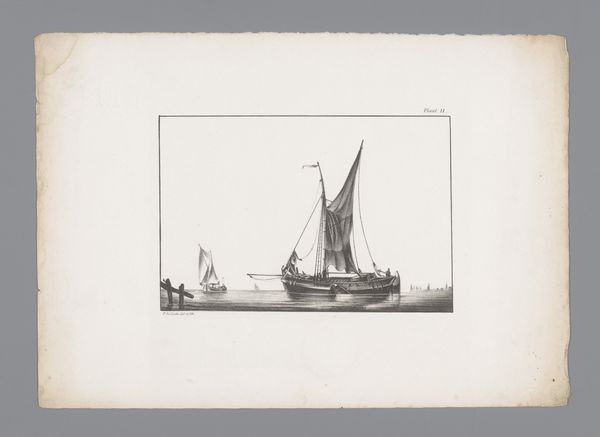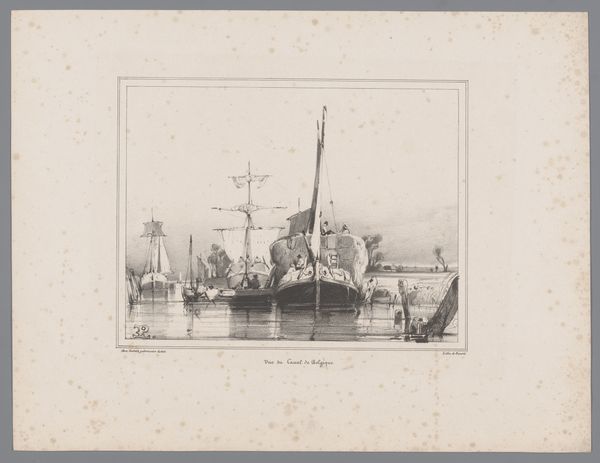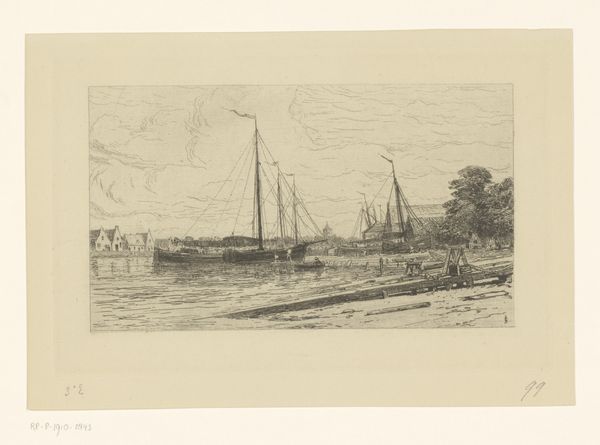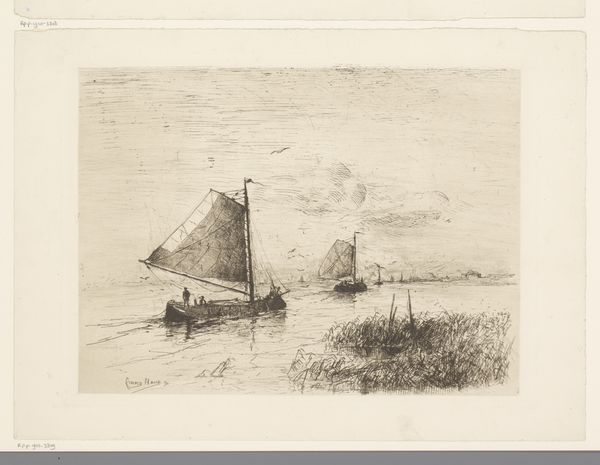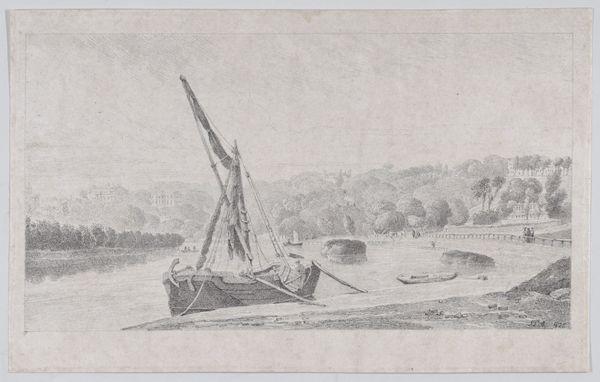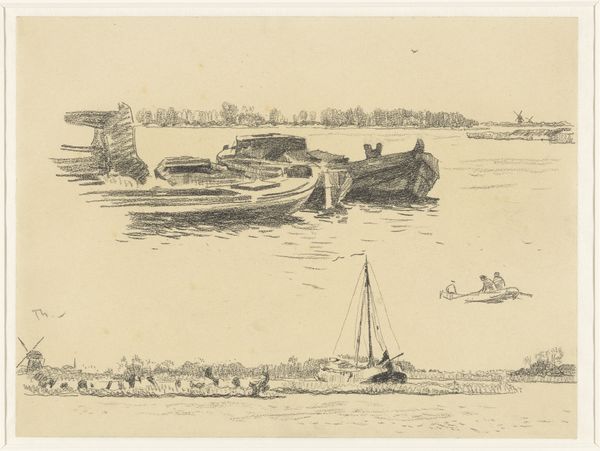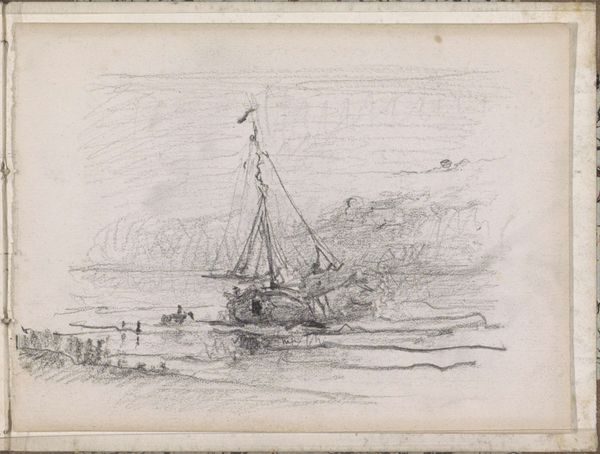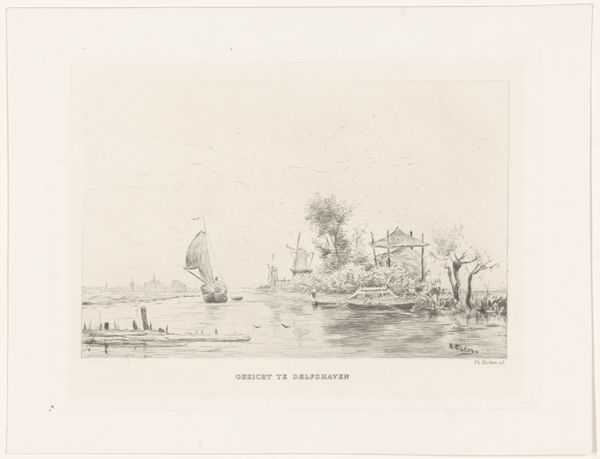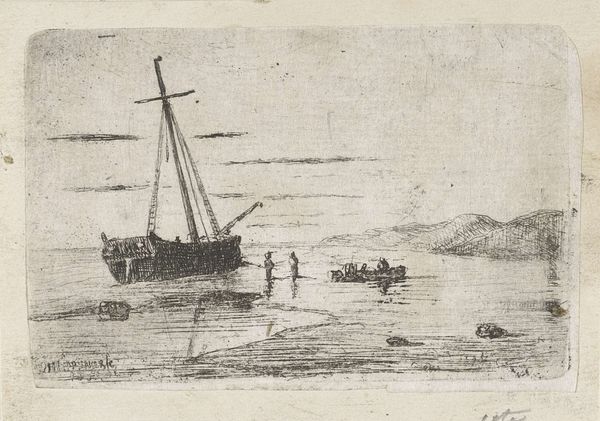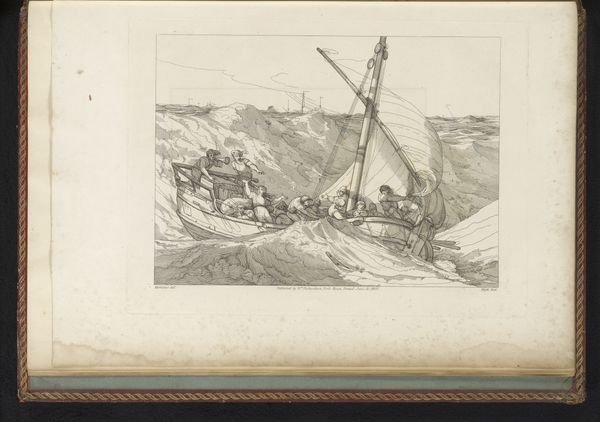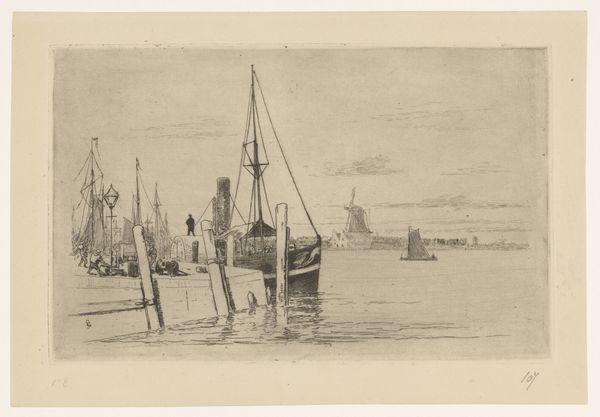
Spotprent op de aftakeling van de koffie- en suikerhandel van de Nederlandsche Handelsmaatschappij, 1868 1867
0:00
0:00
drawing, print, etching, engraving
#
drawing
#
comic strip sketch
#
quirky sketch
# print
#
etching
#
sketch book
#
personal journal design
#
figuration
#
personal sketchbook
#
idea generation sketch
#
sketchwork
#
line
#
sketchbook drawing
#
cityscape
#
history-painting
#
storyboard and sketchbook work
#
sketchbook art
#
engraving
Dimensions: height 215 mm, width 275 mm
Copyright: Rijks Museum: Open Domain
Curator: What a striking image. Here we have a political cartoon from 1867, etched by Johan Michaël Schmidt Crans. It's titled "Spotprent op de aftakeling van de koffie- en suikerhandel van de Nederlandsche Handelsmaatschappij, 1868," which translates to "Cartoon on the decline of the coffee and sugar trade of the Dutch Trading Society, 1868." Editor: My first thought is how forlorn the whole scene looks. There’s a boat listing, a drooping flag, and a few figures on a dock who seem to be waving goodbye to… prosperity? It has a strong sense of decline and abandonment. Curator: Indeed. The image revolves around this dilapidated ship, clearly meant to represent the Nederlandsche Handelsmaatschappij, or NHM. The Dutch Trading Society held a near-monopoly on the coffee and sugar trade from the Dutch East Indies. See the name on the boat: "Nooit Gedacht?" It's Dutch for "Never Thought," adding a layer of irony to the depiction of decline. The artist uses the ship as a powerful symbol. Editor: It's really cleverly composed, leading your eye from the waving figures to the struggling boat. Considering it's an etching, there's a surprising amount of texture that amplifies the sense of decay. The use of line also adds a nervous energy, suggesting the instability of the situation. From a historical perspective, I’m wondering what led to this decline. Was it market forces, or political decisions? Curator: Likely a complex interplay. The caption cites commission reports relating to the budget for the Dutch East Indies of 1869, implying policy debates played a role. But remember, commodities like coffee and sugar carried heavy symbolic weight, representative of colonialism and wealth extraction. The drooping flag could thus also point to the flagging Dutch imperial power at the time. Editor: So the imagery touches not just on economic realities, but also on larger anxieties surrounding Dutch colonial power. Given the historical context, seeing such pointed symbolism makes the cartoon even more impactful. It makes me question what elements of the present carry that same historical baggage without us necessarily seeing it in our day to day. Curator: Exactly. And I appreciate how the artist, Crans, uses a single image to speak volumes about an institution, its struggles, and the larger social and political landscape of the time. Editor: Definitely. This etching reminds us that seemingly simple images can be incredibly rich with historical meaning and social critique. It’s quite telling.
Comments
No comments
Be the first to comment and join the conversation on the ultimate creative platform.
